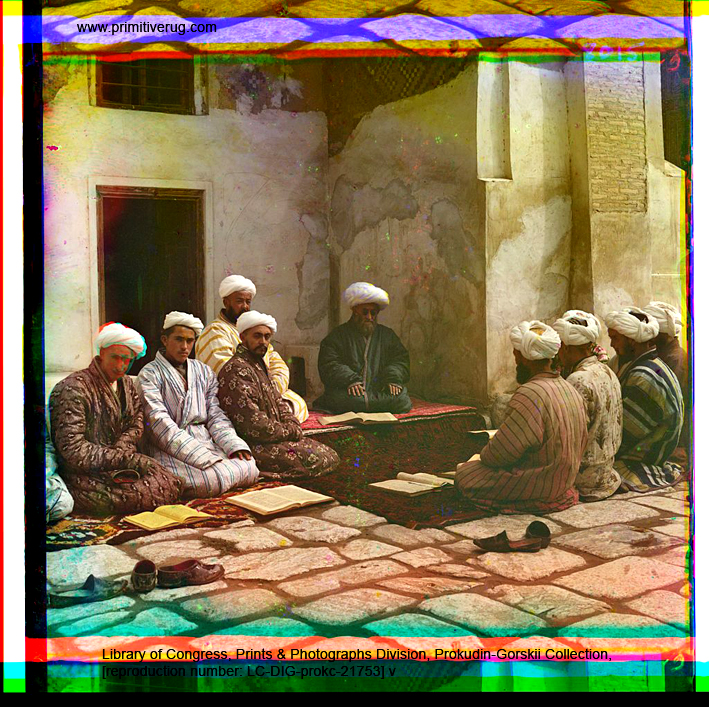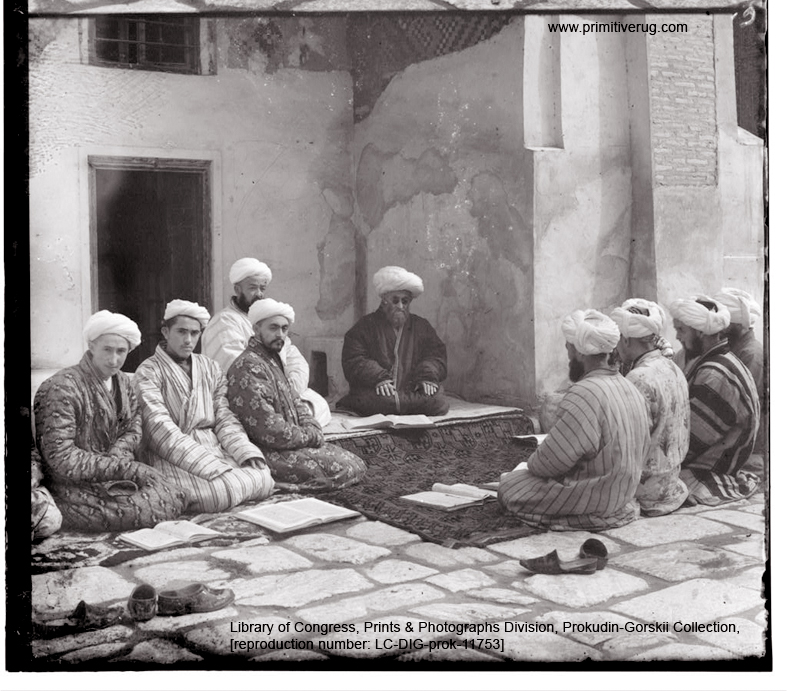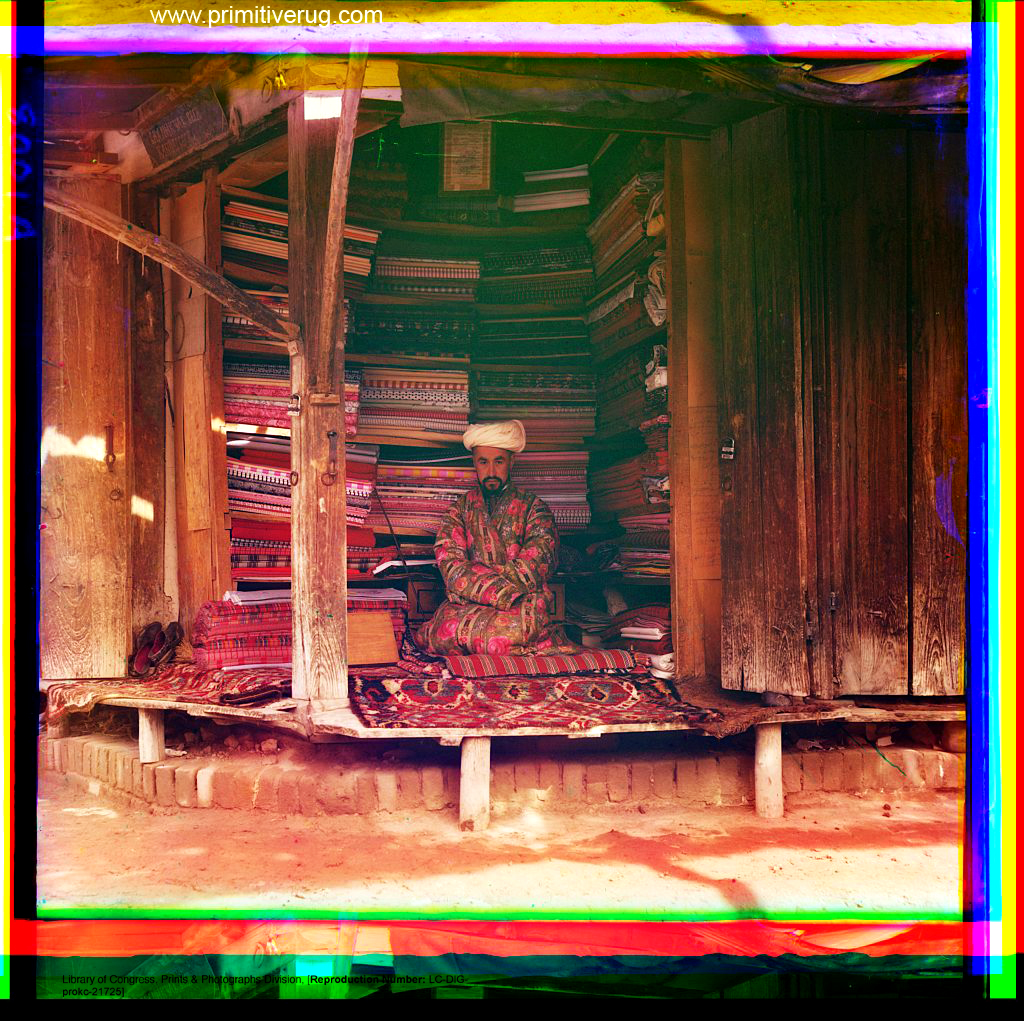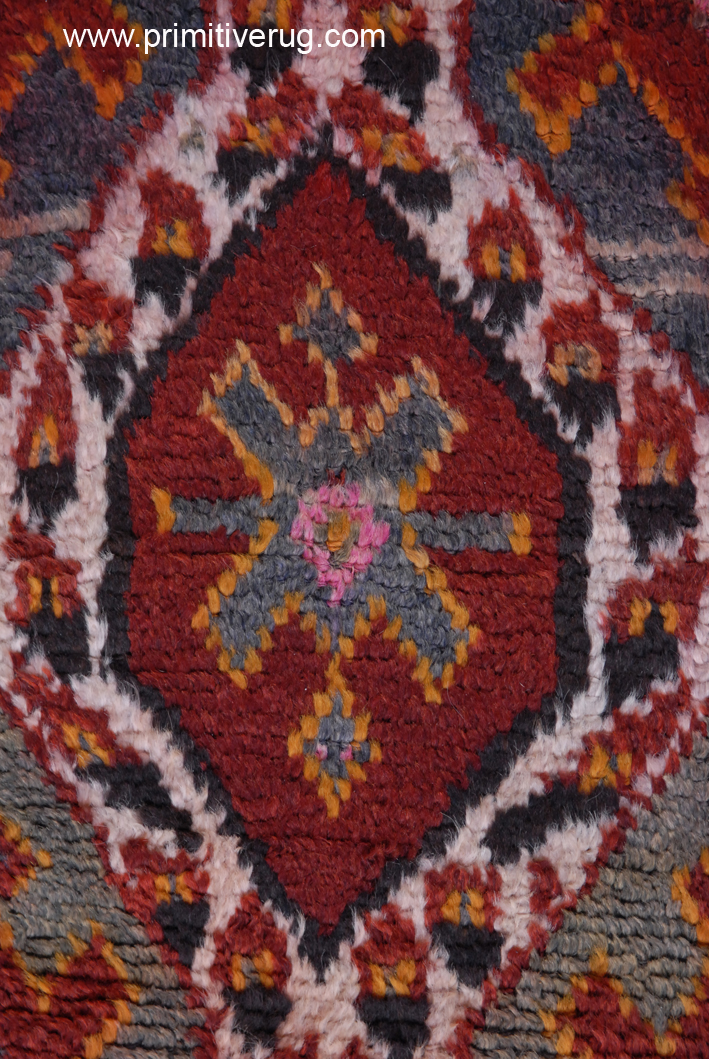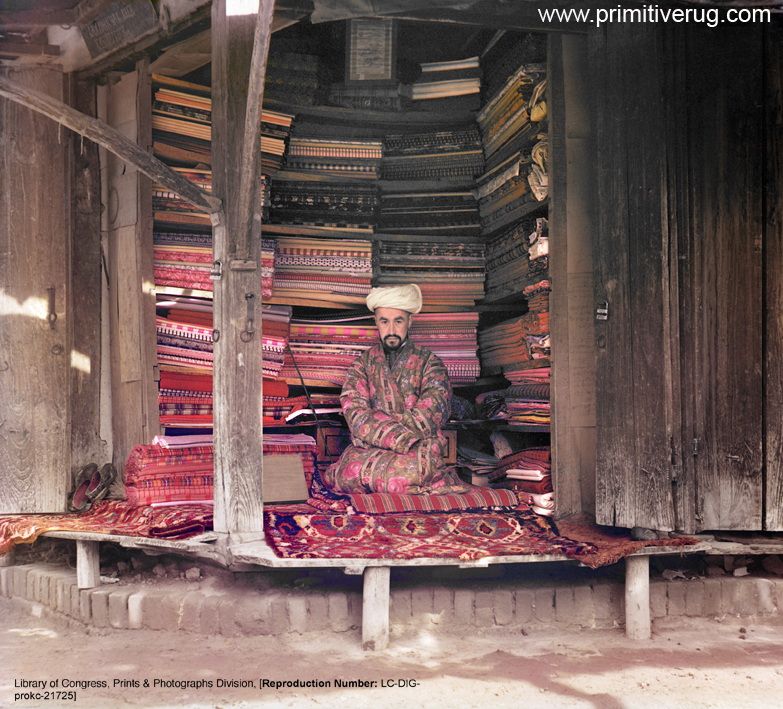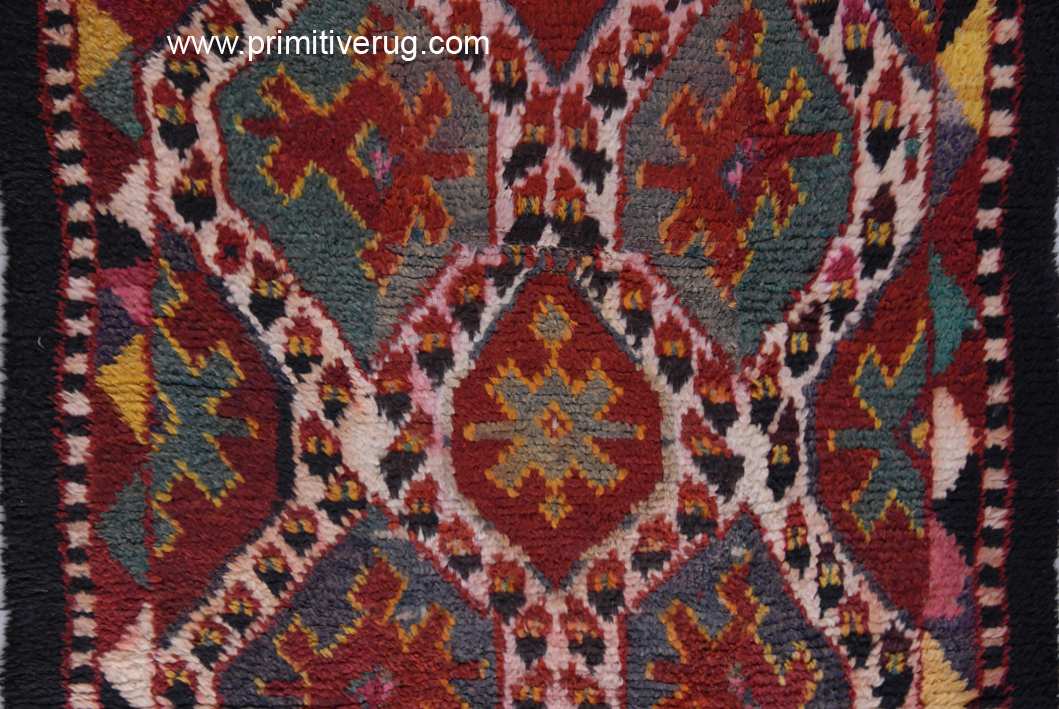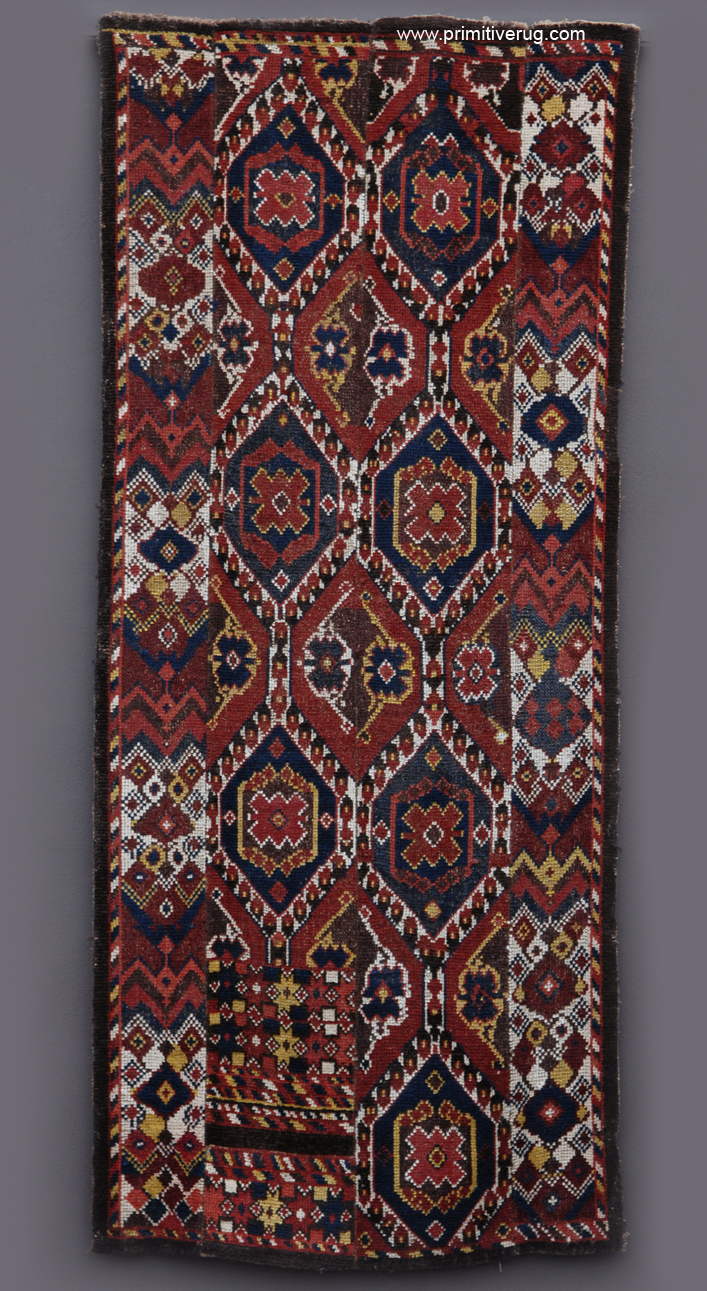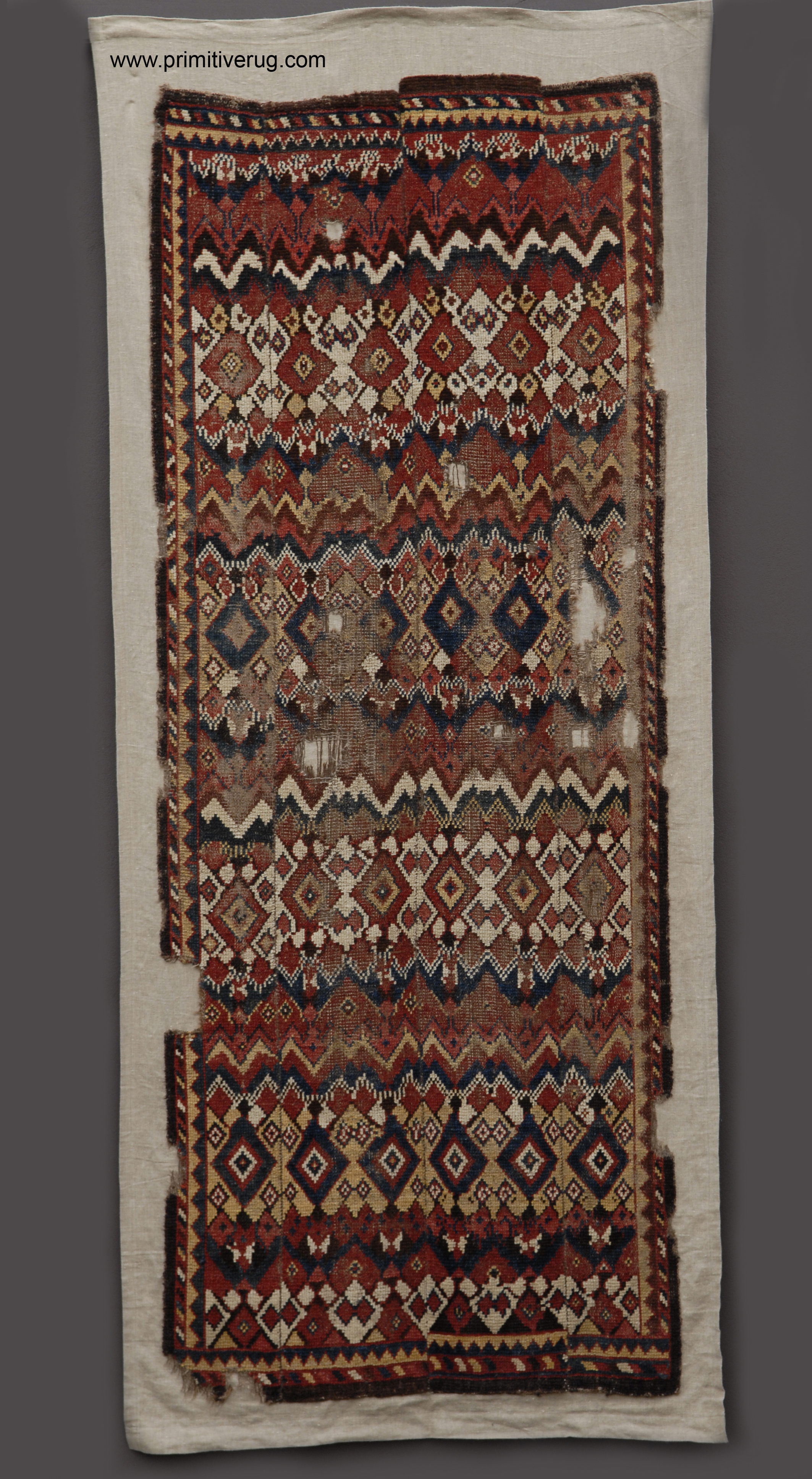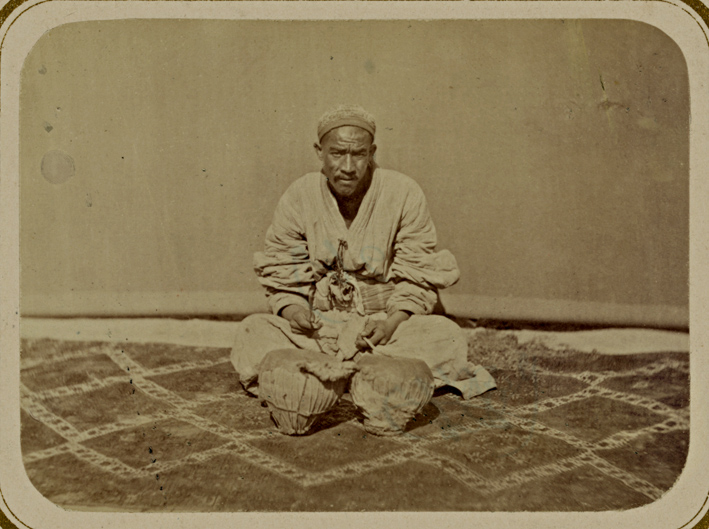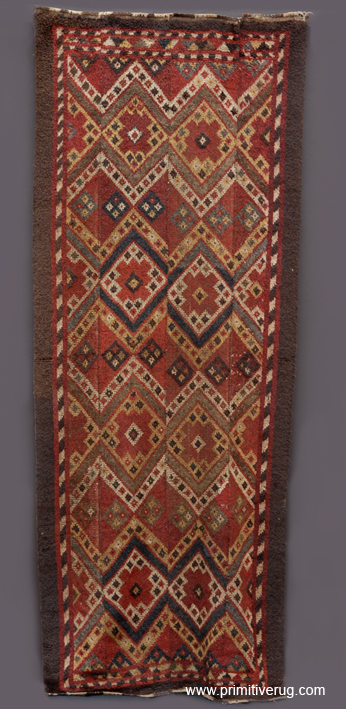Julkhirs in Mosque Courtyard - Mudaris Samarkand
Robert Cobcroft
Julkhirs Bearskin Rug in Mosque Courtyard Mudaris Samarkand Circa 1910
An Uzbek Julkhirs used as a seating rug in the courtyard of a mosque. Julkhirs in Uzbekistan at the beginning of the 20th century were documented by Prokudin-Gorskiĭ, Sergeĭ Mikhaĭlovich, 1863-1944, photographer. These early Julkhirs images compliment those shot by Dudin and ethnographic data collected by Moshkova, Semenov and Dudin. Julkhirs were sold at the markets of Bukhara and Samarkand. 1 "Julkhirs served as floor covering near the hearth or cooking/heating brazier. However, the rug collection of the Uzbekistan Museum of Art contains a julkhirs in the shape of a long, wide runnner, probably intended for a rich mehmankhana (geust house). It is thus possible that rugs of this type were produced not only for purely domestic use but for the market as well."2 The fabric merchant of Samarkand and the students in the Mudaris courtyard illustrate how julkhirs were used in a domestic setting, the long pile would provide a more comfortable and soft surface when seated for long periods and explains one reason why julkhirs proved so popular. "The distribution of the julkhirs, designated by identical or similar terms in the Samarqand Oblast, suggests that the geographic extent of this rug type was once rather great, although their production apparantly never exceeded the limits of the local market. " 3
Shoes are not worn whilst seated and books are placed on the rug. Used together with other rugs on the ground. This Julkhirs is new and typical of early 20th century production.
IMAGES:
1 Library of Congress, Prints & Photographs Division, Prokudin-Gorskii Collection, [reproduction number: LC-DIG-prokc-21753 - LC-DIG-prok-11753] Views in Central Asia, Russian Empire, LOT 10338, no. 124.
REFERENCES:
1. Moshkova V. G. Carpets of the People of Central Asia George O’Bannon, Arizona Lithographers Tucson, Arizona, 1996 p.83 (Dudin noted this sometime between 1910 and 1914.)
2. ibid., p.83.
3. ibid., p.83.

